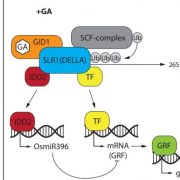
Gibberellin signaling in plants – Entry of a new microRNA player
Plant Physiology, Plant Physiology: News and Views, ResearchRaimund Nagel
University of Leipzig
[email protected]
Gibberellins (GA) are essential hormones that control plant development as major regulators of stem elongation, germination, dormancy, flowering, leaf senescence and fruit development (Hedden and Thomas, 2012). Their biosynthesis…
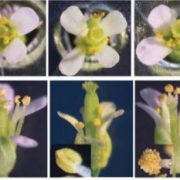
It’s a TRAPP! Arabidopsis Transport Protein Particle (TRAPP) Complexes Contain a Novel Plant-Specific Subunit
Research, The Plant Cell, The Plant Cell: In BriefMembrane vesicle trafficking is the process of moving and distributing signaling molecules from their place of synthesis or capture to target locations inside or outside the cell. Vesicles, mobile membrane compartments produced from the endoplasmic reticulum, carry proteins and other molecules to an…
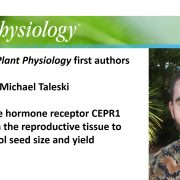
Recognizing Plant Physiology authors: Michael Taleski
Plant Physiology, Plant Physiology: Author ProfilesMichael Taleski, first author of The peptide hormone receptor CEPR1 functions in the reproductive tissue to control seed size and yield
Current Position: PhD Candidate in the Djordjevic Lab, Australian National University (ANU), Division of Plant Sciences
Education: B Science (Advanced) (Honours),…
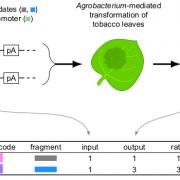
An optimized high-throughput assay for the identification of enhancers in plant genomes
Research, The Plant Cell, The Plant Cell: In a NutshellJores et al. adapt STARR-seq for identifying enhancers in tobacco leaves.
Plant Cell https://doi.org/10.1105/tpc.20.00155
By Tobias Joresa, Jackson Tonniesa,b, Michael W Dorritya, Josh T Cuperusa, Stanley Fieldsa,c and Christine Queitscha
a Department of Genome Sciences, University of Washington,…
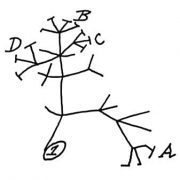
Essays on "What makes a paper *really* pioneering?"
Blog, Pubs PagesWhat makes a paper *really* pioneering?
This is the question we posed in a recent webinar.
We asked each of our panelists to write a few words on this question, each focusing on a slightly different angle. In the recorded video (below), you can hear the panelists elaborate on these ideas. Here…
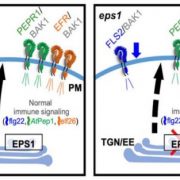
EPSIN1 contributes to plant immunity by modulating the abundance of pattern recognition receptors at the plasma membrane
Plant Physiology, Plant Physiology: News and Views, ResearchWei Zhang
Department of Plant Pathology, Kansas State University, 1712 Claflin Road, Throckmorton Hall, Manhattan, KS, 66502, USA
[email protected]
ORCID 0000-0002-5092-643X
Plants have evolved many pattern recognition receptors (PRRs) that localize to the cell surface. As the frontline…
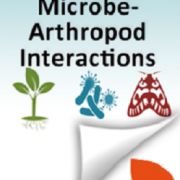
New Teaching Tool, "Three-Way Interactions between Plants, Microbes, and Arthropods (PMA): Impacts, Mechanisms, and Prospects for Sustainable Plant Protection"
Blog, Pubs Pages, The Plant CellWe’re excited to announce the publication of The Plant Cell’s latest Teaching Tool, “Three-Way Interactions between Plants, Microbes, and Arthropods (PMA): Impacts, Mechanisms, and Prospects for Sustainable Plant Protection,” by Maria J. Pozo, Benedicte R. Albrectsen, Eduardo R. Bejarano, Eduardo…
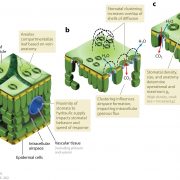
Review: Guard cell metabolism and stomatal function (Annu. Rev. Plant Biol.)
Plant Science Research WeeklyStomatal conductance, gs, is one of the most important and highly regulated plant processes. Lawson and Matthews review how guard cell metabolism, stomatal anatomy and patterning, and signals from the mesophyll affect gs which in turn affects plant productivity and water use efficiency. This is an excellent…

Review: Targeting root ion uptake kinetics to increase plant productivity and nutrient use efficiency (Plant Physiol.)
Plant Science Research WeeklyContinuous agricultural production is required to feed the growing population, and fertilizers are important factors determining the productivity of today’s high-input agriculture. Fertilizers increase the cost of production, some are produced from finite sources, and some create environmental concern,…

